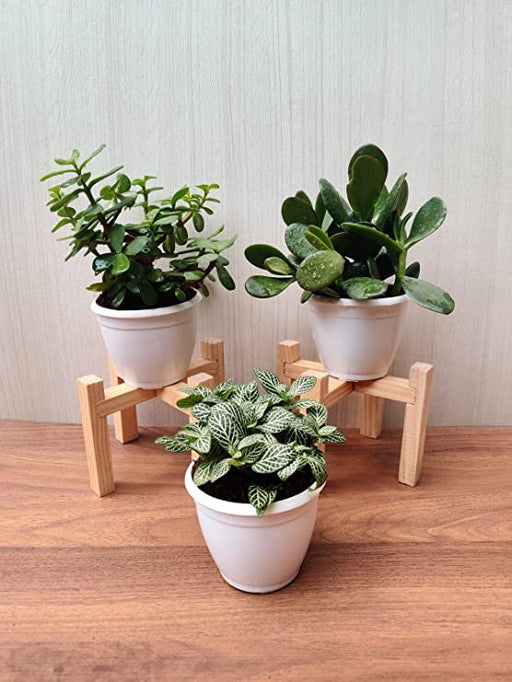Fittonia is one of best the air-purifying and low-maintenance indoor plants suitable for all tiny spaces. With its fresh green veiny leaves, this ever-green indoor plant is surely a mesmerizing sight to any home.
An easy-to-care fittonia is commonly known as the ‘nerve plant’ because of its appearance with white and colorful nerves running across each leaf.
If you're looking for a small yet aesthetically pleasing indoor plant that can add some charm to your home, you may want to consider Fittonia albivenis, also known as the nerve plant. Not only does it look great on tabletops and hanging baskets, but it also has the added benefit of purifying the air. This little plant may be just the thing you need to spruce up your living space.
Fittonia benefits
Nerve plants are evergreen perennials often used bought for their aesthetic ovate, nerved foliage in various colors, and sizes. But, that's not all. Fittonia plants can be your perfect indoor plant with these benefits they come with.
➞ Air purification: Fittonias are air-purifying indoor plants that can easily remove pollutants from the air that are harmful to health. Toxins like toluene, formaldehyde, and benzene are easily eliminated by having this little beauty in your house.
➞ Humidification: Fittonia plants release moisture into the air, which can help to increase humidity levels in your house. Especially beneficial in monsoon, cold months when the air is usually dry.
➟ Reduces Stress :Numerous studies and research have shown that having plants around your house can drastically improve your mental and physical well-being. Fittonia plants can improve your ambiance and mood with their detailed and unique leaves that are soothing to look at.
➡ Aesthetic Indoors: Fittonia plants in indoor will create a tropical oasis. With their stunning colorful leaves, fittonia can spruce up any space with their luscious bushy appearance.
Fittonia plant care
Nerva plants are easy to maintain and care for. These small indoor plants prefer bright indirect sunlight and well-draining soil mixture.
Fittonia plants need a regular watering schedule. Dry fittonia plants can easily collapse and start to droop but once given a shower, they can bounce back just fine.
Fittonia varieties
Nerve plant varieties are truly a majestic sight to behold. With different coloring of the veins and growth pattern, these indoor plants can catch anyone’s attention by just sitting on your tabletop or hanging on a basket. Some of the famous types of fittonia plants are;
✔Nerve plant red
Red veins pop against the green leaves on this low-growing beauty.
✔Nerve plant pink
Pink lover? Fittonia got you! Fittonia pink has adorable pink nerves running along the elegant green leaves adding a touch of beauty to your space.
✔Fittonia argyroneura
Silver-green leaves dance along the ever-green leaves is truly a mesmerizing sight.
✔Fittonia white
Creamy white veins create a stunning contrast against dark green leaves. Fittonia white is one of the best low-maintenance plants for your house.
✔Fittonia entretien
An exotic cultivator from France boasts a mix of mesmerizing colors of silver, green, pink, and red is such a rare sight.
✔Fittonia rosa
Suitable to its name, fittonia rosa is a beautiful plant with magenta-pink veins that add a touch of romance to your interior.
✔Fittonia forest flame
A fiery mix of red and orange veins spice up the green leaves on fittonia forest flame.
Fittonia light requirements
Fittonia plant prefers bright and indirect sunlight. Harsh sunlight can burn these delicate leaves of fittonia. If you don't have a subtle light spot, place your plant a few inches away from the direct sun.
How to make fittonia bushy?
- Pinch off the tips to encourage new growth and branching
- Use balanced fertilizer during the growing season for healthy growth
- Prune fittonia plants to remove dead leaves
- Rotate the fittonia plant pot every week to ensure even growth
- Take care of pests and infections if you spot them right away.
Why is my fittonia drooping?
Fittonia drooping is a common issue, it could be because of various reasons such as over or underwatering, lack of sunlight (exposure to cold temperatures), and pest infestation.
























